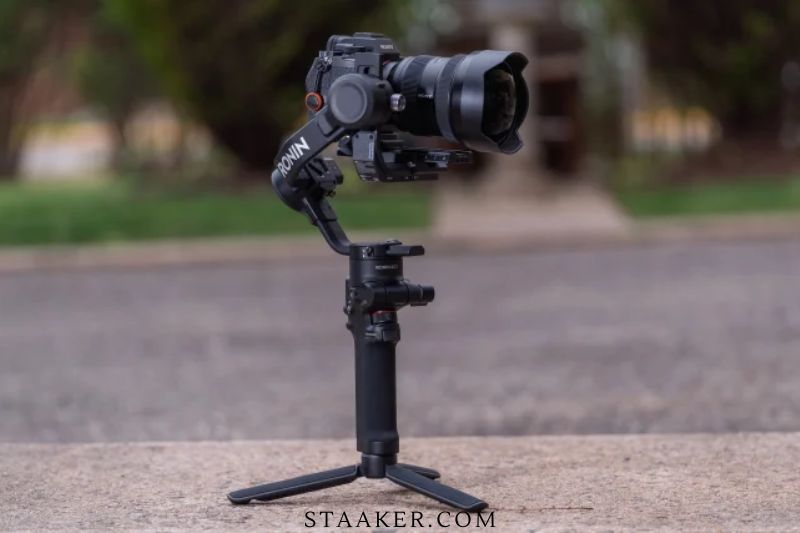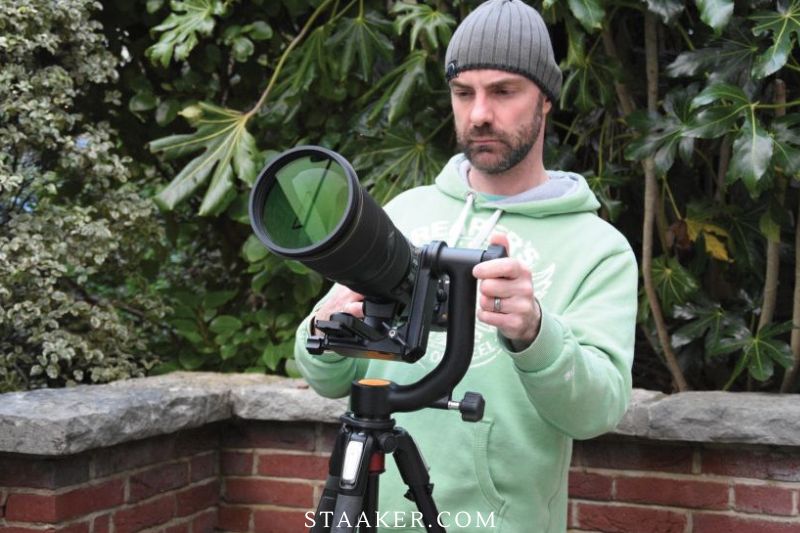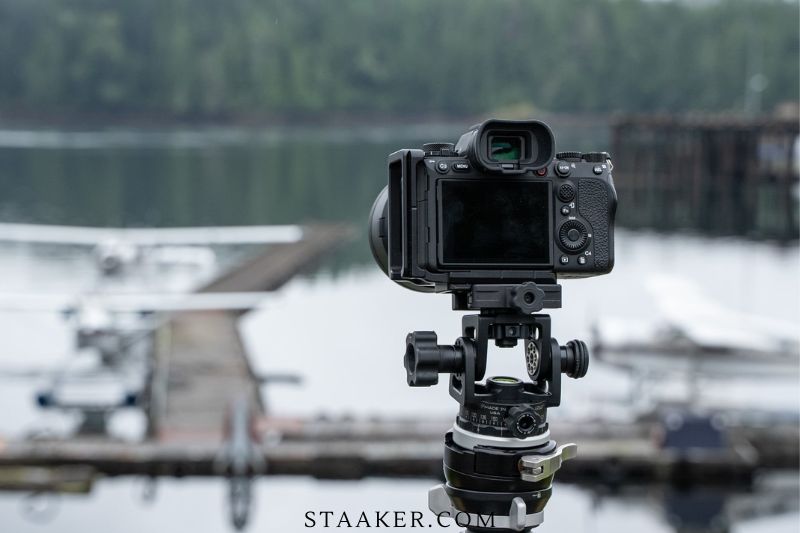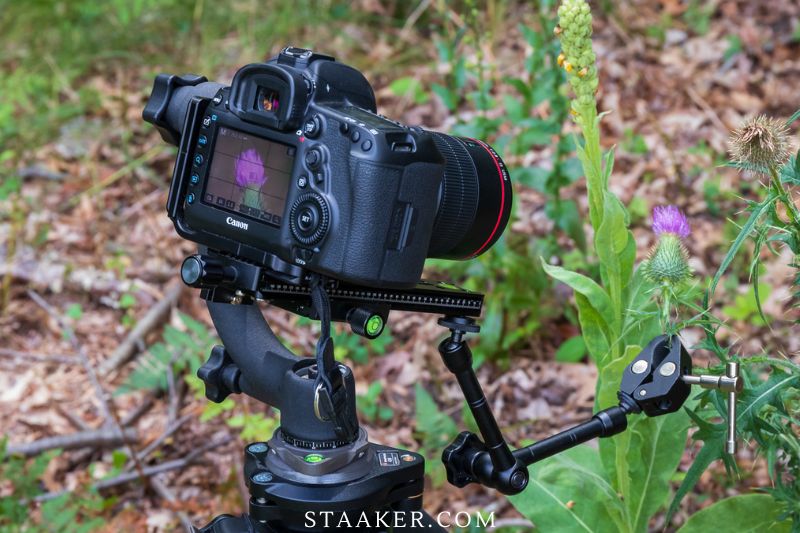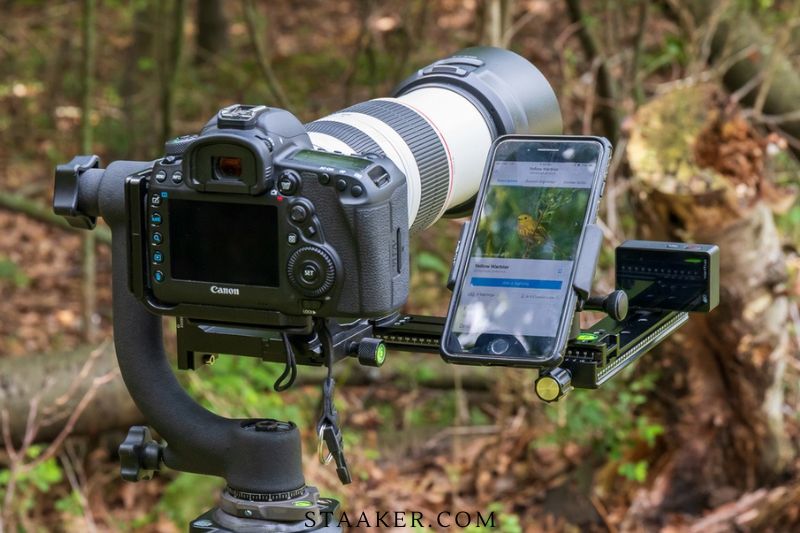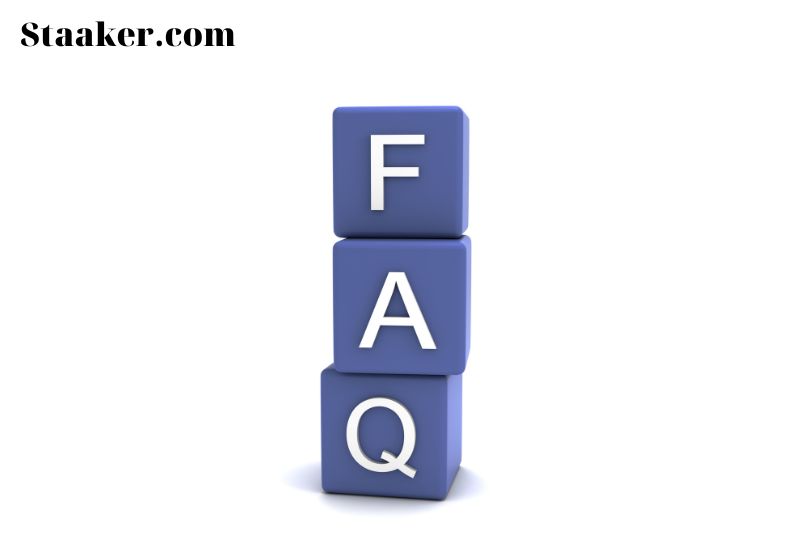If you’re using a tripod to capture video footage, you may consider using a gimbal tripod head. This type of head allows you to pan and tilt the camera smoothly, which can be ideal for tracking moving subjects or capturing dynamic shots. Here’s a quick introduction to how to use a gimbal tripod head to get smoother video footage.
Know The Difference Between a Videography and Photography Gimbal
Any search for the term “gimbal” online is likely to provide a mixed bag of results. That’s because gimbals can be used for both still photography and video. It’s important to distinguish between the two when making your first gimbal purchase.
Gimbals for non-electronic photography are the focus of this article. This gimbal is made to be attached to a tripod through a quick-release plate. Once the tripod is set up, the camera and lens are securely resting on it for use. Rebalancing your gimbal may be necessary if your tripod’s orientation changes significantly or if you use a heavier lens.
In contrast, a video gimbal stabilizes your camera while it moves. Rotating gyros, motors, and other electronic machines are used to maintain everything straight to counteract the camera’s inertia.
These can be used either as a handheld device or as an attachment to a moving vehicle, so no tripod is required. In addition, power is needed to maintain the camera’s level. Compared to a tripod gimbal, their weight capacity is significantly lower.
Using the search word ‘tripod gimbal’ will expedite your search results. As previously stated, video gimbals are not meant to be mounted to a tripod. On the other hand, photography gimbals are only meant to be used with tripods.
Is A Gimbal Tripod Head Even Necessary?
Before investing in a tripod head, consider why you need one. Gimbal tripod heads are highly specialized for photography and are only required for specific shooting situations. Many sports and wildlife photographers rely on them because of their hefty equipment and the necessity to be mobile.
You may want to consider a gimbal tripod head if this is something you’re considering or have some experience with. When taking photos, there are some situations where a gimbal may not be necessary. You may want to look for a high-quality ball head for your tripod.
Choosing the right equipment for your photography needs can be challenging, with so many alternatives on the market. However, there are a number of alternative tripod heads out there that could better fit your needs.
How To Attach A Gimbal Head To A Tripod
When to use a Footed Lens in Standard Mode
To begin with, a gimbal tripod head can be used to balance a heavy lens and camera. Arca-Swiss type feet or aftermarket replacements are available for several big lenses that come with a tripod foot. A tripod bracket may be required for some models.
With the Arca-Swiss compatibility of nearly every gimbal on the market today, you’ll probably want to upgrade all of your tripod mounts to this system. The usage of an Arca-Swiss compatible L-bracket was something I already had in place before switching to a gimbal.
Because of the extra length, it provides for hand carrying, I went with the Hejnar Photo Arca Type Foot Replacement for my Canon EF 100-400mm f/4.5-5.6L IS II USM. I didn’t realize it at the time, but it proved helpful for other purposes, so keep reading.
Although this may vary widely depending on what type of photography you are doing, I like the different controls of the gimbal rather than a ball head for controlling the tilt and rotation while composing my shot.”
Head-Leveling Gimbal
You’ll have to adjust your tripod legs if you need to level your camera. This is one of the limitations of using a gimbal. A Manfrotto 438 Compact Leveling Head with a 10- to 15-degree adjustment range works perfectly for my use. It’s a little heavier, but the Manfrotto leveling head is tough and can support up to 33 pounds.
For panoramic photography, I use a combination of a gimbal head, a long tripod foot and a leveling head to ensure that my long lens is level with the horizon at all times.
A Lens That Isn’t Footed
For big-footed lenses, the Arca-Swiss mount is intended in a front-to-back arrangement, making it difficult to utilize with an un-footed lens on a gimbal tripod head. To use a non-footed lens with this mount, you must either mount gimbal on tripod plate to your camera or use an adaptor. You can also acquire a side-mounted gimbal for this purpose.
As it turned out, a nodal rail I used to create panoramic images with my ball-head also works well as an adapter for the L-bracket. The nodal rail can be used on a gimbal or a ball head to take panoramic photographs. You can choose from various lengths for the nodal rails that I use.
It’s also possible to flip the rails around so that the camera extends out in front, which I’ve done on rare occasions when shooting macro in the field or (even rarer) straight down. You can get the job done without needing to bring along another tripod, but it’s not as convenient as one with a central column.
Because I often shoot with my tripod legs spread wide, I’m not concerned about tipping over while using the nodal rail in this manner. However, using it this way does shift the weight forward and reduce the degree of downward tilt.
Use of Two Nodal Rails
Everyone will have their preferences. However, this may come in handy for some. The nodal rails I’m using have twenty-four 1/4″-20 threaded holes. With the same size clamps as the nodal rails, you may connect them. This has proven to be a valuable tool for mounting other cameras, such as my Canon M100 and action cameras.
My phone can be mounted right next to the camera so that I can play bird cries or record videos while I’m out photographing birds. One camera can be targeted at me, and the other can be aimed in the same general direction as the primary camera.
Because of the nodal rail, I can attach other gear like cameras, lights, phones, and microphones. I use an extra 5″ replacement foot on my Canon EF 100-400mm f/4.5-5.6L IS II USM.
However, you could also use this setup with a ball-head, but the increased weight and bulk would make it a little more challenging to use and adjust, especially if you want to flip between landscape and portrait orientations.
I’ve held plants in place with a super arm when there’s a slight breeze. Additionally, it might be used to hold reflectors and other lighting equipment such as flashlights.
FAQs
Is there a tripod on which a gimbal head may be mounted?
You can’t just use any tripod for this. While a simple ball head will suffice for photographing static subjects, you’ll need a more advanced head with a motor if you wish to follow moving things like birds in flight. The gimbal head makes it possible to use heavy telephoto lenses without noticing their bulk.
Can a gimbal be attached to a tripod?
It’s better to type in “tripod gimbal” while searching for this type of device because, unlike photography-specific gimbals that can only be used with tripods, video gimbals aren’t intended to be used with them.
Is a gimbal head necessary for wildlife photographers?
“If you are serious about wildlife photography, you will need a gimbal head,” explains professional wildlife photographer Ian Plant. Using the gimbal head, he will demonstrate its various functions. To easily follow your wildlife subjects, you’ll want to use a gimbal tripod head.
Is it possible to snap landscapes with a gimbal head?
However, a gimbal head has some drawbacks, such as its enormous weight and bulk limit its use. In addition, it is not well-suited for photographing landscapes or close-ups. Using a lens that doesn’t have a rotating tripod collar is also problematic, as it restricts your camera’s orientation.
Video
Conclusion
This guide explains how to attach gimbal head to tripod to get smoother video footage. This gives the photographer much more control over the camera’s orientation, making it easier to take a level and correctly composed photos. If you’re interested in using a gimbal tripod head for your next video project, check out our range of options online.
If you wanna know more useful information, please access our website Staaker.com to explore more.


